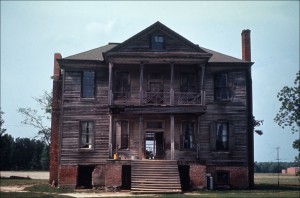by James A. Bacon
The Northern Virginia exurbs, like exurbs across the country, are cruising for a bruising. EM Risse would never express himself so inelegantly or imprecisely but that’s the thrust, in colloquial terms, of a new essay, “The Great Submergence,” he has posted on his website.
The United States economy, argues Risse, a former Bacon’s Rebellion contributor, is in the midst of a profound shift — what he calls the U Turn — away from the scattered, low-density pattern of growth widely referred to as “suburban sprawl” (a label he avoids as a “core confusing word”) toward infill and re-development of the nation’s urban cores. This trend, which is taking place for reasons amply documented on this blog, has profound implications for homeowners and political jurisdictions on the metropolitan edge where landowners, developers and speculators valued land with the expectation that it would be developed some day into shopping centers, office parks and residential subdivisions.
Given the cost of providing transportation, utilities and municipal services, the logical limit for development in the Washington metropolitan region is about 20 to 35 miles from the metropolitan center in Washington, D.C., Risse writes. Land beyond that limit, he contends, is experiencing collapsing demand as people seek to live closer to the metropolitan core, closer to jobs and amenities in walkable communities with more transportation options. That collapse he calls “the Great Submergence.”
Some clusters of development may adapt and survive but others will be economically unsustainable and wilt away. Another phrase for “wilt away” would be “dry up and blow away,” just like western mining towns when the claims ran dry, just like Great Plains farming towns during the Dust Bowl and Depression. Risse’s home town of Warrenton, he warns, is the “bulls eye of the danger zone.”
As demand evaporates for single-family dwellings on large lots in remote locations, land and housing prices will fall. Every new single-family dwelling built in Greater Warrenton-Fauquier (and other communities situated more 25 to 30 miles from the metropolitan center) will serve to drive down the value of existing properties. Writes Risse:
The downward trend will be exacerbated by the fact that there are dwellings selling BELOW their replacement cost. Further, there will be many scattered Units that have not been maintained, which will further deflate the market via assessment / appraisal “comparables.”
Declining land and improvement values, he says, will have a devastating impact on municipal tax bases in this exurban dead zone as well as household net worth, much of which is composed of housing equity.
Bacon’s bottom line: I’m in 95% agreement with Risse. The reason I hesitate to say 100% is that there are powerful forces at work to sustain “sprawl,” the most important of which is the slow pace, due to zoning restrictions, at which urbanized jurisdictions close to the Washington metropolitan core can free more land for more compact, higher-density development. If demand for housing exceeds supply in Washington’s urban core, growth will default to exurban communities (beyond the 25-mile radius) planned and approved in the 2000s simply because there is nowhere else to build.
With that caveat aside, I share Risse’s larger concern. A dozen or more exurban counties on the metropolitan fringe of Washington, Richmond and Hampton Roads are likely to experience deflating land values, shrinking real estate property revenues and chronic fiscal stress. Their scattered, low-density settlement patterns have high embedded costs and local governments will be hard-pressed to maintain the supporting services and infrastructure. Once the newness wears off and depreciation sets in, these places will become worn, shabby and dilapidated.
Driving back from vacation on the North Carolina coast a couple of weeks ago, I passed through a dozen hamlets and crossroads in farming communities. I was shocked to see so many boarded up and tumble-down buildings that property owners had simply abandoned. The knowledge economy has passed these inland communities by. Sure, the real estate is cheap but no one wants to live there anymore. The houses don’t even have for-sale signs on them. The price of better houses is so low that it’s not even worth patching up the decaying ones. Virginia’s exurbs have not reached that stage yet. But give them time. Let the shiny newness wear off. In 20 years, we could see the same thing.
Those who miss Risse’s writing on Bacon’s Rebellion should check out the “Current Perspectives” on his website.
Update: Ed Risse has responded to Larry Gross’ comments on this post in the form of an essay, “Blogging, Geographical Illiteracy and the Great Submergence.”



